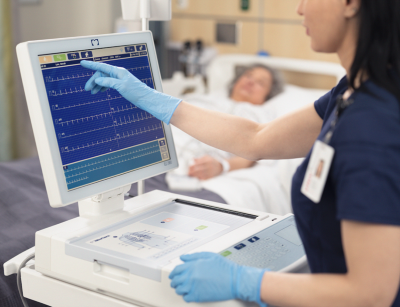With the ongoing prevalence of heart disease and stroke in the American population, soaring supply and operating expenses, critically low staffing levels and inefficient processes, healthcare systems are clamoring for new and better ways to manage clinical care and its associated costs. These challenges not only negatively affect the bottom line, but limit access to patient data across the health network, making it harder to perform vital clinical activities. In response to this landscape, top organizations are simplifying their workflows with streamlined cardiology systems to provide clinicians with greater access to patient data and ultimately, more confident clinical decisions.
The Problem: Multiple EMRs, Diverse File Formats, and the Inability to Transmit Dynamic Data
Traditionally, cardiology data is acquired from across the care continuum using a variety of different exam modalities, many of which are in diverse file formats and from various manufacturers.
The current practice is to take that information and store it in the available ECG Management System, typically linked to the EMR. Many facilities have devices that can directly transmit dynamic data, or data that continually changes after it’s recorded in order to maintain its integrity. However, 9 out of every 10 ECG devices sold into primary care environments cannot transmit dynamic data1, so they must print and scan in the information manually, resulting in a less than optimal static ECG result. Many times, the scans are far from diagnostic quality.
As health systems continue to grow and expand, data shows they may be using as many as five (5) different cardiology management systems just within the hospital network itself.2 Across an entire IDN, there are on average, 16 different EMRs in use. Each EMR requires time and money for maintenance and connectivity.
The top networks perform well over 100, 10-second ECG exams per day3 so creating consistency of care becomes difficult with many locations and various technologies. Annually, clinicians perform more than 100 million ECGs in the United States.4
Clinicians rely on clear and accurate ECG data, but, frustratingly, each device may have a different clinical standard. In fact, 1 in 4 exams will need to be repeated, and over 10% of tests may be falsely labeled due to improper lead positioning5. This costs the staff time and the network reimbursement for unbilled exams.
When overreading, providers may not be in the same physical location where a test was administered. Unaware of which of the numerous systems the data was sent to, providers may have to log in to several to review a patient’s history, perform clinical calculations, and make a diagnosis. This creates a latency issue for patients waiting to receive proper treatment and follow-up care.
The Solution: Streamline Cardiology Systems and Use Devices with Diagnostic Clarity
- Eliminate redundancies by streamlining cardiology systems in the network through a single vendor who can help support an expanding clinical and IT footprint.
- Provide a patient’s full cardiology history, in one central location, to connected care teams.
- Leverage simple-to-use devices that provide diagnostic clarity in addition to decision support tools with exceptional clinical accuracy.
Streamlining a health system can reduce operating costs, increase reimbursements, and enable a higher level of care across the health network. Ultimately, integrated cardiology systems will increase patient satisfaction and give more time back to dedicated staff.
References
1. Statistics based on data collected from report on file at Baxter: Sales Trace Data.2. Statistics based on data collected from internal report: Definitive Healthcare Data – 2021 Health IT Analysis. Complete data on file with Baxter.
3. Statistics based on data collected from internal report: The ECG Billings Data. Complete data on file at Baxter.
4. Tison GH, Zhang J, Delling FN, Deo RC. Automated and Interpretable Patient ECG Profiles for Disease Detection, Tracking, and Discovery. Circulation: Cardiovascular Quality and Outcomes. 2019;12(9). https://doi.org/10.1161/circoutcomes.118.005289
5. Statistics based on data collected from internal reports: Repeat ECG Research Summary. Complete data on file with Baxter.
About CME: CME Corp is the nation’s premier source for healthcare equipment, turnkey logistics, and biomedical services, representing 2 million+ products from more than 2,000 manufacturers.
With two corporate offices and 35+ service centers, our mission is to help healthcare facilities nationwide reduce the cost of the equipment they purchase, make their equipment specification, delivery, installation, and maintenance processes more efficient, and help them seamlessly launch, renovate and expand on schedule. For more information, visit www.cmecorp.com.


